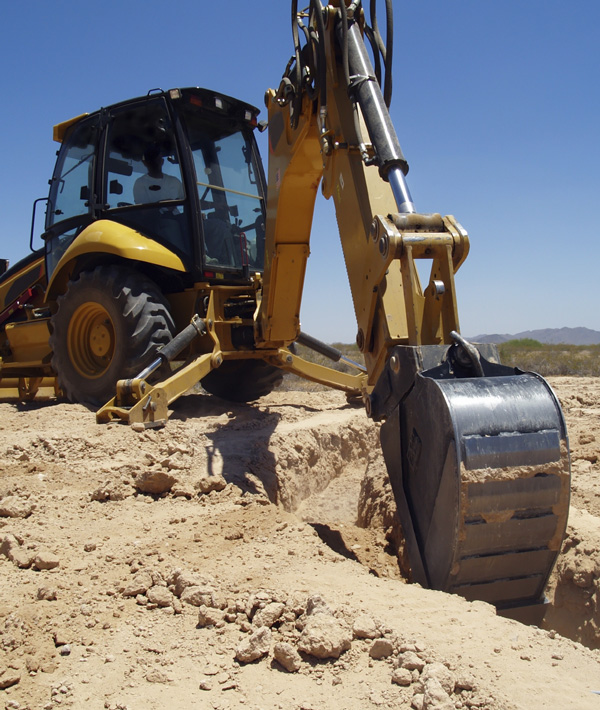Dig safely and prevent utility dig-ins
Utility contacts can be costly—and deadly. Underground utility contacts cost utility owners and contractors millions of dollars in repair and service disruption costs every year. Not only that, workers who contact buried utilities put themselves and the public at risk of injury or death. It’s your responsibility to dig safely to protect yourself, your crew and the public.
Always call 811 well in advance of digging.
Call 811 before you dig, blast, bore, trench, drill, grade or excavate in any way. They will arrange for marking of underground power lines and other utilities so you can keep your distance. White-line your proposed excavation route, so locators can more easily mark the affected utilities.
Never rely solely on your utility maps.
Utility maps are not updated often, and the markings may be off. The one-call center has the most current, most accurate information about buried utilities.
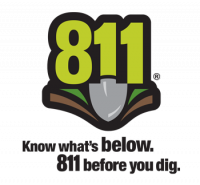 Call 811 well ahead of digging, so underground utilities can be marked and you can work safely.
Call 811 well ahead of digging, so underground utilities can be marked and you can work safely.
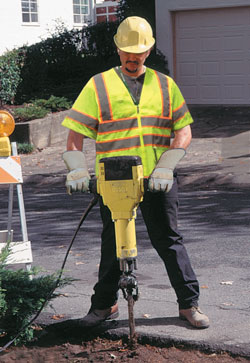
Shocking fact:
You must call the one-call center at least two working days before work begins. (Your state may require even more notice.) If you don’t call well enough in advance, and you hit an underground utility, you risk not only injury but costly damages and possible criminal charges.
Utility locator markings protect you.
Make sure you and your crew know how to read utility locator markings and know the American Public Works Association (APWA) uniform color code for marking underground utilities. Color code charts are usually available from your local one-call utility locator service.
Locator flags are placed within paint marks.
If you find flags outside the borders of locator markings, someone may have tampered with them. Contact your local one-call utility locator service.
| APWA Color Code for Locator Marks | |
| Red | Electric power lines |
| Pink | Temporary survey markings |
| White | Proposed excavation |
| Yellow | Gas, oil or steam |
| Blue | Potable water |
| Green | Sewers and drain lines |
| Orange | Communication lines, cables or conduit |
| Purple | Reclaimed water, irrigation and slurry lines |
Utility locator markings protect you from injury and prevent damage to underground utilities. Make sure you and your crew know how to read them.

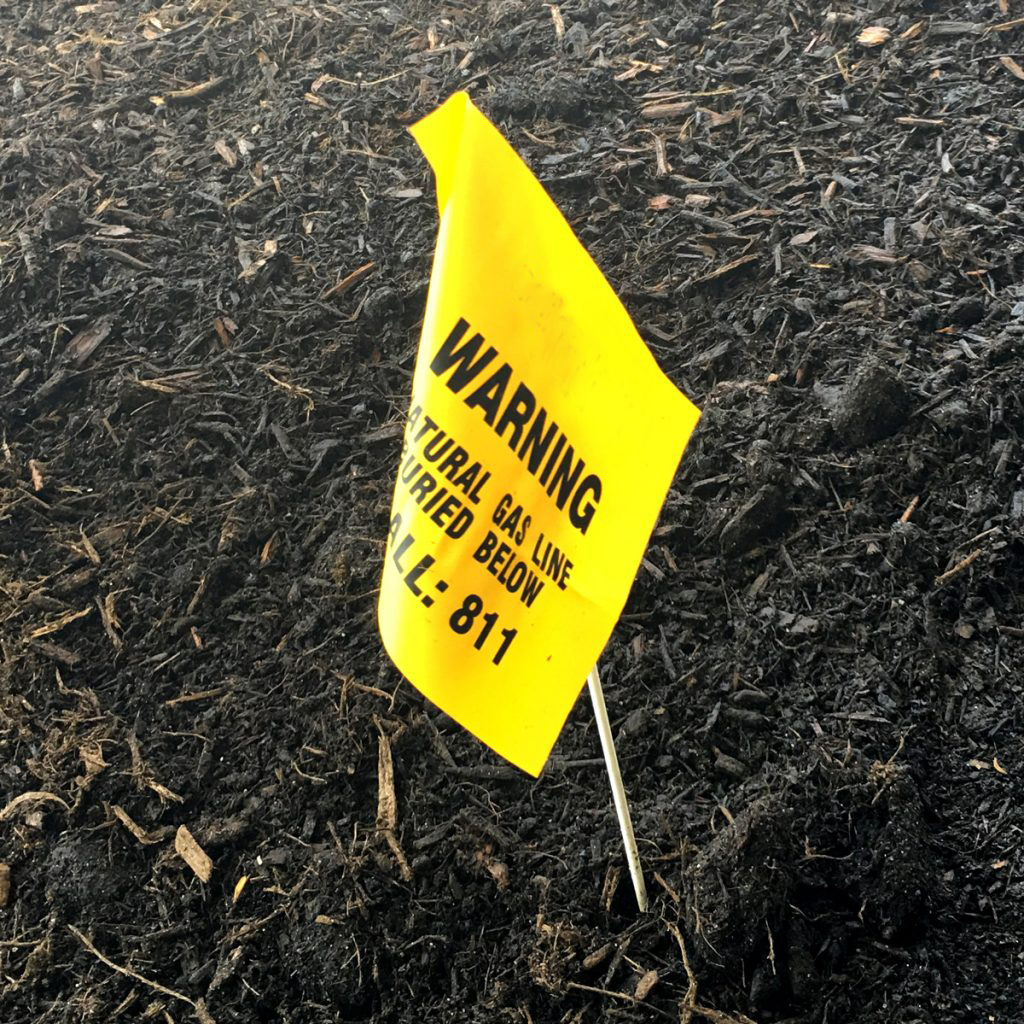
Shocking fact:
You might arrive at a job site and find no markers, even AFTER utility locating has been completed. In this case, do not assume that the area is clear of utilities. Someone may have pulled up the flags or rubbed out the markings. Or the locator may have marked the wrong site. Check for aboveground indicators that buried utilities may be present, such as utility meters and conduit. Contact the 811 service for assistance before starting work. Some areas do not have a mandated zone, but depend upon the digger to exercise good judgment
The tolerance zone protects buried utilities.
The tolerance zone is the width of an underground utility plus a specified tolerance distance on both sides of that utility. Do not use power-digging equipment within this zone. The zone provides a margin of error in case the locator marks are slightly off. It also provides a buffer zone to prevent damage resulting from nearby excavation.
The tolerance zone also protects you.
If you do not respect the tolerance zone, you risk contacting buried utilities. You also risk damaging them indirectly by removing supporting soil, which could cause the utility to bend or break. You could be injured or killed, and your company could be liable for any damages that occur.
To avoid damaging buried utilities, do not power dig within the tolerance zone. Hand dig or use vacuum technology instead.

Shocking fact:
The width of the tolerance zone varies from state to state, and it is the excavator’s responsibility to know what it is.
Check utility depth for yourself.
Before you can safely cross or work close to an underground utility, you must first verify its depth. Flags and locator marks tell you the direction the utility is running, but not how deeply it is buried. The only way to be sure of utility depth is to carefully expose it and see for yourself.
Proper hand-digging tools and techniques will protect both you and the utility:
- Use a blunt-nosed shovel to loosen the soil, and a regular shovel to remove it. Do not use a pickax or a pointed spade. Do not stab at the soil or stomp on the shovel with both feet.
- Work with a gentle prying action and dig at an angle, so the shovel will slide along the surface of the wire, conduit or pipe. Or, dig to the depth where you expect the utility to be, but off to the side. Then use a prying motion to break away soil as you approach the utility laterally.
Use proper hand-digging tools and techniques to safely verify the depth of any buried utilities you must cross or work near.
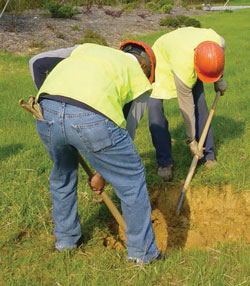
Shocking fact:
Buried utilities are supposed to be installed at a specified depth. But in reality, utility depth is unpredictable. Improper installation, landscaping, regrading, repaving, erosion and building development can all alter utility depth.
Vacuum equipment helps you verify utility depth.
Before you can safely cross or work close to an underground utility, you must first verify its depth. Flags and locator marks tell you the direction the utility is running, but not how deeply it is buried. The only way to be sure of utility depth is to carefully expose it yourself.
Vacuum equipment saves hand labor.
Vacuum technology can expose buried utilities without harming them. It uses suction and water pressure to remove soil down to the utility. Operate vacuum equipment only if you have been properly trained in its use.
If damage to a utility does occur, report it immediately.
Repairs can be made more easily while the utility is still exposed. Never try to fix a damaged utility yourself.
Be sure to wear proper personal protective equipment when using vacuum technology to verify utility depth.
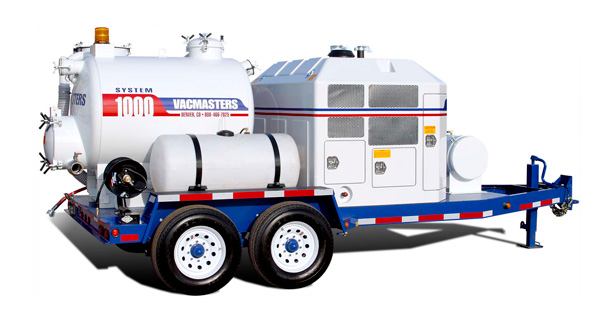
Shocking fact:
Follow recommended practices for backfilling any utilities you uncover or expose with vacuum technology. Check with the local utility owner and municipality. Some facilities require a bed of sand, fine stone, or slurry.
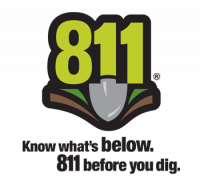 Notify 811 well in advance of directional drilling. If you are planning to use directional drilling, call 811 well ahead of the job. Let them know about the equipment you will be using, and ask them to space locator marks closer together. This will help you see if the utility’s path shifts or turns suddenly.
Notify 811 well in advance of directional drilling. If you are planning to use directional drilling, call 811 well ahead of the job. Let them know about the equipment you will be using, and ask them to space locator marks closer together. This will help you see if the utility’s path shifts or turns suddenly.
Dig potholes so you can safely monitor the drill head.
A buried drill head makes it impossible to tell how close you really are to an existing utility. This makes it especially important to manually expose the line and watch as the drill string passes through. Keep a margin of safety by planning the bore to be a minimum distance of 36 inches from the utility. Watch the drill head cross during the initial bore and also during backreaming to ensure this minimum distance is maintained.
Calibrate the bore head and locating device at the start of each job.
Remember, the locating device can monitor the bore head on the initial pass, but may not be able to monitor the backream head.
Stay at least three feet away when boring parallel to buried utilities. Pothole utilities so you can monitor the bore head path and visually verify a safe distance.
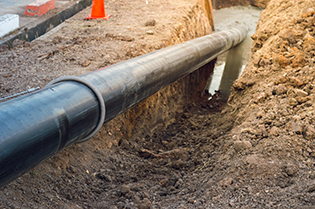
Shocking fact:
Many drilling rigs have utility strike alarms that will alert you if you contact a buried power line. If this alarm sounds, assume you have hit a live power line and follow your company’s guidelines and the emergency procedures described on this website.
There’s no such thing as minor damage to utilities.
What looks like a small nick in a gas, sewer, electricity or water line can result in a major health and fire hazard to the surrounding neighborhood. And damaged phone lines or fiber optic cables can disrupt 911 emergency service.
Never bury a damaged utility.
Trying to cover up an accident can be dangerous, and can lead to costly damages or criminal charges against you and your company. Take the following steps instead.
In case of power line contact:
- If you can do so safely, move the equipment away from the line.
- Stay on the equipment until utility workers say it is safe to get off.
- Warn others away. Anyone who touches the equipment or even the ground nearby may be injured or killed.
- Have someone call 911 and the local electric utility immediately.
If fire or other danger forces you off, jump clear, keeping both feet together and without touching the ground and the equipment at the same time. Shuffle away with small steps, keeping your feet close together and on the ground. Or, hop away on two feet, keeping both feet together.
In case of gas pipeline contact:
- Warn others and evacuate the area immediately.
- Do not use matches, cell phones, radios or lighters. Even a tiny spark, such as starting a vehicle, could ignite the gas.
- Leave the excavation open. Do not operate pipeline valves or bury the line.
- Call 911 and the local gas utility immediately.
- Stay away from the area until safety officials say it is safe to return.
If you damage a gas pipeline that results in a release or suspect a gas leak, immediately call 911 and the local natural gas utility.
In the event of any type of utility contact, take appropriate safety steps and notify your supervisor and the utility immediately.
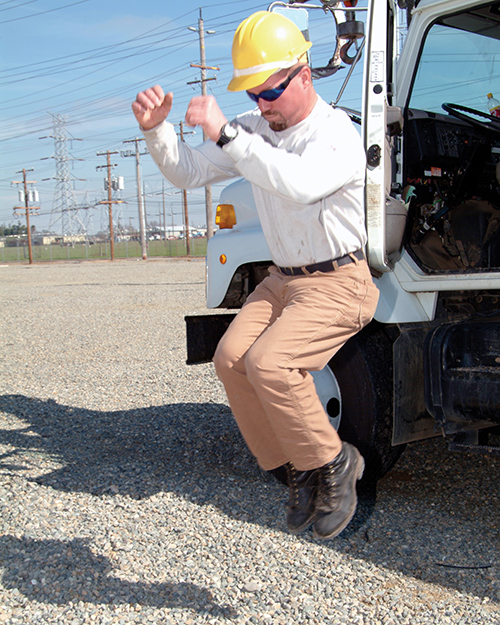
Learn the warning signs of a gas pipeline leak.
- A distinctive, sulfur-like odor
- A hissing or roaring sound
- Dirt spraying or blowing into the air
- Continual bubbling in water
- Grass/plants dead or dying for no apparent reason
Shocking fact:
An underground utility contact can happen even if you have dug in the area before or think you know the location of the lines. Landscaping, erosion, or other factors can change the location and depth of underground lines. Call 811 well in advance to have all underground utility lines marked.
